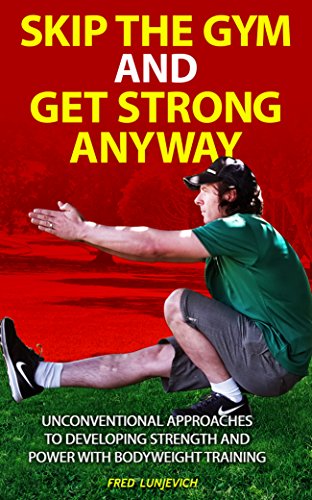I’m currently on vacation in sunny Britain and with less than a month to go until I return to New Zealand, I can’t see how I’m going to be in decent enough shape to play ice hockey back home. Too many pints, Cornish Pasties and Teacakes.
So to keep things simple, I’ve devised a programme to kick my butt into shape in quick time.
It would be tempting to over-complicate my training with all kinds of exercises. However, I’ve learned through years of frustration that too many exercises just ends in confusion and ultimately failure to reach my goals.
If I had kettlebells with me, I’d use swings to get the job done but with nothing but body weight I have to find an exercise that is:
- tough
- produces a nice cardio effect
- works the big muscles of both the upper and lower body
- thoroughly tests my core strength
- pounds the legs like skating does
There is only one bodyweight exercise I can think of that satisfies all of these criteria: Burpees.
How do you know that you can rely on Burpees for maximum fitness gains? Well, they’re universally used and hated by the armed forces, athletes and fitness enthusiasts around the globe.
The exercise, named after American physiologist Royal H. Burpee, traditionally involves a squat down, placing the hands on the ground, a thrust into a plank position and finally kicking the feet back to the squat position for a return squat ascent.
This is a challenging exercise but it can be supercharged by adding a push up from the plank position and a jump on the final squat ascent.
So how can we use it to rapidly increase our power, strength and endurance?
Some would just say “do ’em until you drop” but I find this method to be defeating and sub-optimal.
Instead try this: don’t go near failure, in fact, do short bursts, rest and repeat. The rest period should be short enough to allow your muscles to mostly recover so that subsequent sets are as powerful as possible.
There is no need to tax your muscles to the point they start slowing down. This is why the “as many reps as possible” idea is defeating. I want to build fitness on the basis of power, not on the basis of slow, poorly executed reps.
I’m using the On The Minute (OTM) scheme to do this and here’s how I do it:
- Find a number of reps you can do comfortably. I started with just 4. Resist thinking that this figure is too low. The method works because you’re doing a demanding exercise powerfully over multiple sets.
- Perform each set of 4 on the minute. I find 4 reps takes me about 15 seconds. This leaves me with 45 seconds of rest.
- Perform enough sets to get a good conditioning stimulus. You will instinctively know when this is, BUT don’t fall for the “yeah but I could do heaps more”. I started with just 8 sets of 4, or 32 reps scattered across 7 minutes.
- Progression: Add a rep to each successive set each workout. For example, having worked up to my target of 8 sets of 4, I added a rep to the first set so it was 1×5, then 7×4. The next day I added a rep to set 2 so it was 2×5, then 6×4 and so on.
After I reach 8 sets of 5 I’ll add a set each workout to bring it to 12 and then add a rep to each of those. 12 sets of 5 = 60 reps in 11 minutes.
This progression can take 3 weeks, depending on how many rest days I add.
At that point I might shoot for adding an additional rep each workout but I won’t go over 6. For the OTM scheme, 4-6 is good because it gives you at most 20 seconds of work and at least 40 seconds of rest.
The beauty of it is it’s simplicity and the careful handling of intensity. I’m staying relatively powerful across each set so I get a great alactic workout (the powerful movement energy system) while also building my recovery abilities through the cardiovascular system.
Furthermore, I can probably go again tomorrow on most days so I progress quicker than I otherwise would if I’m burning myself too much each workout.
Pace yourself and only do as much as is reasonable. The goal is to avoid the burn and get through a nice volume of work to be effective. I find that’s 6-12 sets, which I encourage you to build up over a month or so.
If the jump and push up Burpee is too much, omit those and just do the basic version. Starting there allows you to work on the progression up to the more intense Burpee. Just use the same OTM scheme for each progression and you’ll be fine.
Give it a try – you never know, you might start to love the exercise most people hate!
- How to do a more effective Burpee (YouTube)

